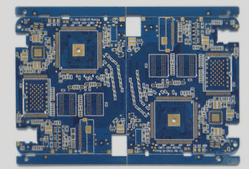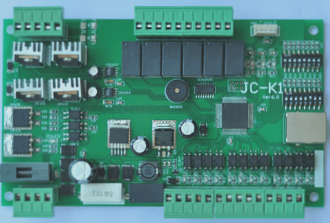1. Many PCB prototyping services offer high-quality PCB boards at competitive prices. However, if your choice isn’t ideal, you might encounter various small issues that could cause some inconvenience. The primary source for evaluating options is the Internet. Customer reviews can provide valuable insight into assessing the PCB manufacturing process of a potential supplier. Other resources to consider include social media, recommendations from colleagues, or feedback from other contacts. In some cases, it may be worthwhile to experiment with mass production at any given manufacturer, assess their PCB manufacturing process, and refine the quality yourself. Different individuals may have varying experiences, and what proves problematic for one person might be suitable for another.
2. Evaluate the quality of the delivered PCB. If you decide to test a new PCB manufacturer, it’s important to inspect some critical aspects when receiving the board. Typically, this involves PCB quality checks. Here are some key areas to look out for:
3. Circuit board size — ensure it conforms to standard specifications.

1. **Hole size, accurate positioning, and centering**
2. **Cutting quality** – Check whether the edges of the board are cut correctly.
3. **Silkscreen** – Ensure that small parts are clearly readable and visible.
4. **Soldering layer** – Must be accurate and correct.
5. **Has connectivity been tested?** – Most manufacturers now implement this as standard.
6. These small but crucial issues can influence the choice of PCB manufacturers. The key to PCB quality lies in the successful assembly of electronic equipment.
7. **Consider the manufacturer’s requirements when designing your PCB**
8. Before starting a new PCB design, it’s best to review the capabilities of the chosen manufacturer. They typically define the minimum and maximum dimensions for PCB components, such as holes, traces, and voids. Just because they specify the smallest size doesn’t mean you should push to minimize everything. Smaller sizes often come with increased risks of failure. Trust your experience and use common sense when designing.
9. **Other factors for choosing the right PCB manufacturer**
10. **Manufacturing cost**: In some cases, this can be a key factor, though competing PCB manufacturers often price similarly. Other aspects may prove more important, such as production timeline—the lead time needed to manufacture the PCB. If you require a quick-turn prototype, this is critical. However, this often comes with potential delays in delivery. Be sure to check shipping options and costs. Other advantages might include incentives like the number of boards per order, discounts, or coupons.
11. In general, you should select a PCB manufacturer that aligns with your needs. If necessary, adapt your requirements to fit the manufacturer’s capabilities. Choosing the right manufacturer is a critical step toward successful assembly and production of your electronic devices. The time spent selecting a PCB manufacturer is well worth it in the long run. If you’re planning large-scale PCB production, it is advisable to visit the manufacturer and familiarize yourself with their entire process for producing high-quality circuit boards.
If you have any PCB manufacturing needs, please do not hesitate to contact me.Contact me
2. Evaluate the quality of the delivered PCB. If you decide to test a new PCB manufacturer, it’s important to inspect some critical aspects when receiving the board. Typically, this involves PCB quality checks. Here are some key areas to look out for:
3. Circuit board size — ensure it conforms to standard specifications.

1. **Hole size, accurate positioning, and centering**
2. **Cutting quality** – Check whether the edges of the board are cut correctly.
3. **Silkscreen** – Ensure that small parts are clearly readable and visible.
4. **Soldering layer** – Must be accurate and correct.
5. **Has connectivity been tested?** – Most manufacturers now implement this as standard.
6. These small but crucial issues can influence the choice of PCB manufacturers. The key to PCB quality lies in the successful assembly of electronic equipment.
7. **Consider the manufacturer’s requirements when designing your PCB**
8. Before starting a new PCB design, it’s best to review the capabilities of the chosen manufacturer. They typically define the minimum and maximum dimensions for PCB components, such as holes, traces, and voids. Just because they specify the smallest size doesn’t mean you should push to minimize everything. Smaller sizes often come with increased risks of failure. Trust your experience and use common sense when designing.
9. **Other factors for choosing the right PCB manufacturer**
10. **Manufacturing cost**: In some cases, this can be a key factor, though competing PCB manufacturers often price similarly. Other aspects may prove more important, such as production timeline—the lead time needed to manufacture the PCB. If you require a quick-turn prototype, this is critical. However, this often comes with potential delays in delivery. Be sure to check shipping options and costs. Other advantages might include incentives like the number of boards per order, discounts, or coupons.
11. In general, you should select a PCB manufacturer that aligns with your needs. If necessary, adapt your requirements to fit the manufacturer’s capabilities. Choosing the right manufacturer is a critical step toward successful assembly and production of your electronic devices. The time spent selecting a PCB manufacturer is well worth it in the long run. If you’re planning large-scale PCB production, it is advisable to visit the manufacturer and familiarize yourself with their entire process for producing high-quality circuit boards.
If you have any PCB manufacturing needs, please do not hesitate to contact me.Contact me




